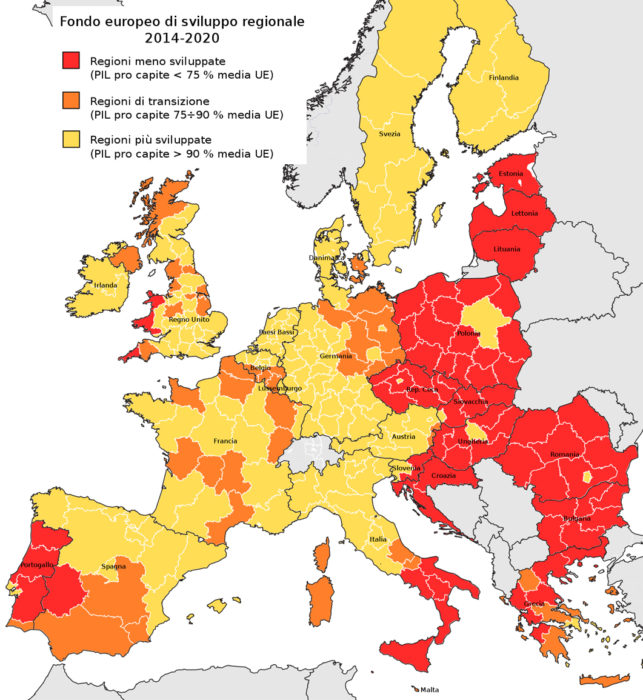The choices made for the allocation of PNRR funds are not always consistent with EU principles.
European funds: strategy and tactics

(Shutterstock).
The ERDF (European Regional Development Fund) identifies “less developed regions” as those whose per capita GDP is less than 75% of the EU average. The European policy of favouring the distribution of economic resources with priority towards these areas is part of a logic of territorial rebalancing.Italy’s southern regions are among the areas with a below-average GDP, along with a large part of Portugal, Extremadura in Spain, Wales and many eastern countries.
The rules for the PNRR funds must also respect this principle.
When the first allocations appeared (3.4 billion for the first call for proposals on urban regeneration), the regions of northern Italy complained of unequal treatment with those of the south, due to the application of the above-mentioned rules.
But here is the next piece of news: the government has decided to allocate 905 million euro to “fish out” the northern projects that were left out of the aforementioned classification.
The new contribution is welcome, for the further benefit of the northern territories, but it loses the coherence of the general principle of mitigation of disparities between more and less developed areas.
It is also true that the economic backwardness of some territories goes hand in hand with a lack of staff and / or appropriate skills even before the funds, so that – for example – the municipalities of Sicily, even before being able to participate in calls for tenders, ask for the possibility of hiring staff, while at the same time professionals in the region are clamouring for external assignments. This does not bode well for the rapid achievement of the Plan’s objectives.
And this is just one of the flaws in what we would like to see as a real “strategy”.
Although included in an overall framework that respects the criteria defined by Europe, the first calls for the allocation of PNRR funds show a dispersion of resources in a thousand rivulets: the 3.4 billion for “urban regeneration” will go (among other things) to the repair of the roof of a town hall, the furnishings of a theatre, the synthetic turf of a soccer field: there is no direction capable of leading the planning towards a homogeneous system of interventions, readable, once the objective has been achieved, on a national scale.
We must hope that subsequent calls for proposals (for school gyms, for urban regeneration in metropolitan cities, for sport, to remain within the sphere of our most direct involvement) will show a strategic vision that goes beyond a thousand local tactics. Because by submitting the bill to Europe, we could run the risk of not having achieved the objectives set, losing the funds in which we have pinned our hopes for recovery.











